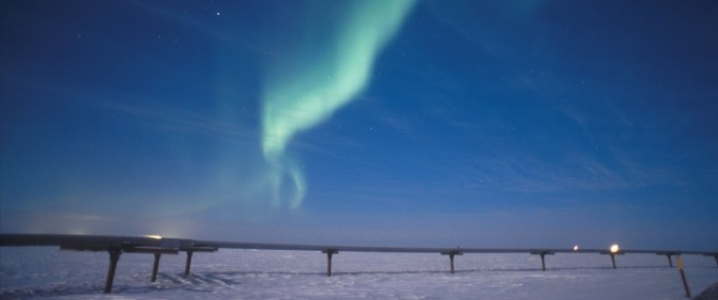Pipeline Battle Set To Harm U.S. Energy Independence

Protests against new oil and gas pipeline construction are becoming more or less part of everyday life in the U.S. and Canada. Keystone XL, Dakota Access, Enbridge’s Line 5, Energy East, you name it. There seem to be dozens of new pipelines in the works, and almost all are the target of protests by environmentalists, Native American tribes and First Nations.
After the demise of the Keystone XL project, the Dakota Access pipeline seems to have garnered the most attention, with mass protests from Native American tribes and their supporters earlier this month succeeding in getting the project shelved – a move by the White House that energy industry insiders warned could set a dangerous precedent for other infrastructure projects, affecting the economic development of the country.
Some observers went further, saying that the suspension of pipeline projects will interfere with the U.S.’ plans to achieve complete energy independence. Criticism of the protests inevitably includes lamenting the new jobs that a pipeline construction project would create, that it’s safer than rail, and how all kinds of businesses along a pipeline would benefit from the activity. Talk about new jobs and more income for businesses is a well-know evergreen in the corporate world that helps to push projects forward.
The opposition—the environmentalist camp—warns of the risks associated with moving oil by pipeline. A pipeline leak has the ability to contaminate significant areas of land—or worse, water—and cleanups are difficult and costly undertakings, and are rarely 100 percent successful.
On top of the Dakota Access drama, the new kid on the protest-the-pipeline-block is Enbridge’s Line 5, which brings crude oil from Canada into the U.S., and part of which passes along the Straits of Mackinac. The twin pipeline was built in 1953 and transports around 23 million gallons of crude daily.
This Monday, more than 200 people, including Native Americans, gathered at the Straits to demand the shutdown of the pipeline.
Opposition to the pipeline is not new, and is spearheaded by the Oil & Water Don’t Mix initiative, but backed by non-environmentalist residents as well. The group has asked the Michigan authorities to stop the flow of crude through Line 5 for the winter, as a spill in winter conditions would be much harder to contain and clean up.
The core of the Line 5 opponents’ stance seems to be that a leak or a spill will inevitably occur at some point, devastating the Great Lakes—home to a fifth of the world’s surface freshwater by volume—totaling 6 quadrillion gallons.
Enbridge’s Line 5, which runs underneath Lake Michigan/Lake Huron has never had any leaks to date, according to Enbridge.
Prompted by the protests, the Canadian company has spent millions on inspections and cleanup equipment, and earlier this year, the pipeline was pronounced safe and fit for purpose by the U.S. Pipeline Safety Administration.
According to proponents of the idea of energy independence by constructing pipelines, the chances of a leak or spill are minute: they argue that pipelines are still the safest mode of transportation for hydrocarbons. The Fraser Institute, a non-partisan research organization from Canada, agrees.
Among those who may not be so quick to agree that the likelihood of a spill is remote enough are Michigan residents, who felt the brunt of the largest inland spill in U.S. history in 2010, dispersing over 1.2 million barrels into Michigan’s Kalamazoo River—less than 80 miles from one of the Great Lakes—the result of a ruptured pipeline operated by… Enbridge.
Although not foolproof, according to a study the Fraser Institute conducted last year, pipelines are indeed safer than rail. The study also showed that the great majority of actual spills (83 percent) take place at the loading and unloading facilities, not in the pipes themselves. The study also shows that most spills (by number)—over 70 percent in fact—are no larger than 1 cubic meter, so pipeline defenders do have facts to back their words.
Residents near the Great Lakes, however, are not comforted by these odds, nor are the environmentalists, who seem intent on eliminating even the slightest chance of a bigger leak occurring, particularly surrounding such a large body of freshwater.
But that’s just part of efforts to wean America off the wretched black stuff that just six years ago caused the biggest environmental catastrophe in the history of the oil industry in the Gulf of Mexico.
The energy industry and the environmental organizations are locked in a battle that will take a lot more time before a clear winner is announced, and in the meantime, pipelines are sure to have a tough go of things.
In the green camp, the stakes are nothing short of the future of the Earth. “Keep it in the ground” is their slogan. To the oil camp, it’s all about bottom lines and the sustainability of their business, which, let’s not forget, really does employ thousands of people, although perhaps at some cost. Their leitmotif is “Energy independence.”
For now, it seems there are few meting points between the two camps. The battle will continue.
Related News
Related News

- Keystone Oil Pipeline Resumes Operations After Temporary Shutdown
- U.S. House Passes Bill to Reverse Biden's LNG Pause
- Biden Administration Buys Oil for Emergency Reserve Above Target Price
- Enbridge to Invest $500 Million in Pipeline Assets, Including Expansion of 850-Mile Gray Oak Pipeline
- Williams Delays Louisiana Pipeline Project Amid Dispute with Competitor Energy Transfer
- Evacuation Technologies to Reduce Methane Releases During Pigging
- U.S. Regulators Approve Mexico Pacific LNG's Saguaro Connector Pipeline
- Editor’s Notebook: Nord Stream’s $20 Billion Question
- Enbridge Receives Approval to Begin Service on Louisiana Venice Gas Pipeline Project
- Russian LNG Unfazed By U.S. Sanctions




Comments